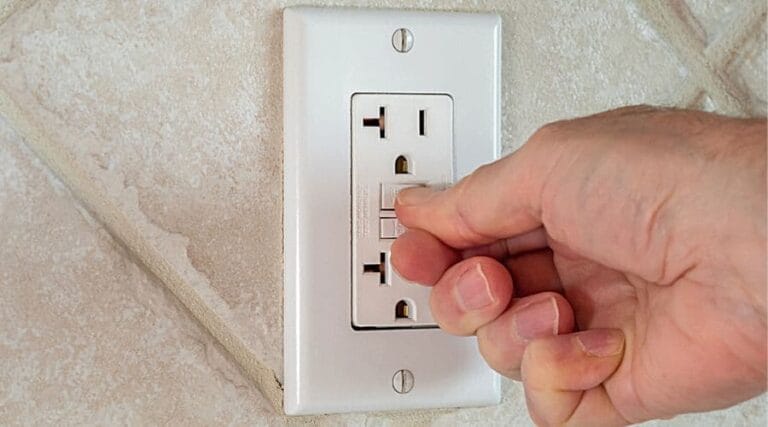Why a 60 Amp Sub Panel No Longer Cuts It
Most houses built before the 1970s weren’t designed for today’s electrical demands. Back then, a 60 amp sub panel seemed perfectly fine. Families had a fridge, a TV, maybe a few lights, and that was it.
Fast forward to now: Sacramento homeowners run HVAC systems, EV chargers, modern appliances, and entire home offices off their panels. A 60 amp sub panel simply wasn’t built to keep up.
So what does that mean for you? If you’re still relying on one, you could be dealing with overloaded circuits, tripped breakers, or even fire risks without realizing it.
What Is a Sub Panel, and Why Does the Size Matter?
A sub panel is a smaller service panel that draws power from your main panel. Think of it like a branch off the main trunk of your home’s electrical system. It distributes power to specific areas, like a garage, workshop, or addition.
Here’s the thing: the amp rating tells you how much electrical load it can handle.
- 60 amps might have been fine for a single workshop or small addition decades ago.
- 100–200 amps is today’s standard for handling the loads we expect.
If your Sacramento home still has a 60 amp sub panel, chances are it’s maxed out.
Common Signs It’s Time to Upgrade from a 60 Amp Sub Panel
From what I’ve seen on the job, homeowners often ignore the warning signs until they become impossible to overlook. Here are the big red flags:
- Constant breaker trips when you run multiple appliances.
- Flickering lights when your AC or dryer kicks on.
- Warm panel covers (never a good sign).
- No room for new circuits if you’re remodeling or adding power-hungry devices.
- Burnt smell or scorch marks near the panel.
One homeowner in East Sacramento told me she had to unplug her treadmill every time she wanted to use her microwave. That’s a classic case of a 60 amp sub panel being stretched beyond its limits.
Safety Risks of Holding on to a 60 Amp Sub Panel
Truth is, running a modern home on an undersized sub panel isn’t just inconvenient, it’s unsafe.
- Overheating wires can create hidden fire hazards.
- Overloaded circuits shorten the lifespan of your appliances.
- Insurance claims may be denied if faulty electrical systems cause damage.
If you ask me, no savings are worth risking your home or family.
How Much Power Do Sacramento Homes Really Need?
So how much is enough? It depends on your lifestyle and what’s plugged in:
- Standard households: A 100 amp sub panel often suffices.
- EV owners: You’ll likely need 150–200 amps to handle chargers plus regular loads.
- Large homes with additions or shops: 200 amps or higher may be the safest bet.
California homes, especially around Sacramento, deal with heavy summer AC usage. Add that to today’s technology-driven lifestyle, and you can see why a 60 amp sub panel feels like trying to run a city block off a garden hose.
The Upgrade Process: What to Expect
Here’s how a typical upgrade from a 60 amp sub panel plays out:
- Assessment – A licensed electrician reviews your current system and calculates your household load.
- Permit & Inspection – Sacramento requires permits, and SMUD (our local utility) often needs to approve the upgrade.
- Panel Replacement – The electrician installs a higher-capacity sub panel (100, 150, or 200 amps).
- Wiring Adjustments – Circuits may need to be re-routed or updated.
- Final Inspection – The city inspector signs off on the work before it’s considered complete.
From start to finish, most upgrades take a day or two, assuming no surprises with old wiring.
Cost of Upgrading from a 60 Amp Sub Panel in Sacramento
Let’s talk numbers, because that’s usually the first question. Costs vary, but here’s a ballpark range I’ve seen locally:
- 100 amp upgrade: $2,200–$3,000+
- 150 amp upgrade: $,3000–$4,000+
- 200 amp upgrade: $4,000–$5,000+
Several factors influence price:
- Age and condition of existing wiring
- Permit and inspection fees
- Whether the service from the utility needs upgrading
- Labor and materials
One Midtown Sacramento client ended up closer to $5,000 because their original wiring dated back to the 1950s and needed heavy rewiring. Others, with newer construction, fall near the lower end of that range.
Why Local Expertise Matters
Electrical codes and requirements vary by city. In Sacramento, older neighborhoods like Curtis Park or East Sac often have hidden wiring quirks. Basements, detached garages, and older remodels sometimes hide surprises that only a seasoned local electrician will catch.
I’ve seen homes where DIY upgrades created patchwork systems. A quick look might fool you into thinking it’s fine, but an experienced eye spots mismatched breakers or undersized wires instantly.
When you’re upgrading from a 60 amp sub panel, that local experience isn’t optional. It’s the difference between a safe, reliable system and one that’s just waiting to fail.
Benefits Beyond Safety
Here’s the upside: an upgrade isn’t just about avoiding fires or tripped breakers. It also adds long-term value.
- Future-proofing – Ready for EVs, hot tubs, or kitchen remodels.
- Resale value – Buyers see updated electrical systems as a plus.
- Energy efficiency – Newer panels distribute power more effectively.
- Peace of mind – No more second-guessing every time you plug something in.
A Real Sacramento Story
A family in Carmichael called me out after their 60 amp sub panel kept tripping during the summer heat. Their kids were trying to run window AC units in upstairs bedrooms, while the parents used the main AC downstairs. Every time the dryer ran, half the house went dark.
We upgraded them to a 150 amp sub panel. Now, not only can they run everything comfortably, but they’ve also added a Level 2 EV charger in the garage without a hitch.
When to Call an Electrician
If you’re not sure whether your sub panel is a problem, ask yourself:
- Does your home have any major remodels or additions?
- Do you run into frequent tripped breakers?
- Are you planning to add an EV charger, hot tub, or home office?
If the answer to any of those is yes, it’s time to at least get an inspection. Old Town Electric can run a load calculation and tell you exactly what size panel makes sense.
Takeaway: Don’t Wait Until It Fails
Upgrading from a 60 amp sub panel isn’t just a technical upgrade, it’s a safety upgrade. It keeps your home reliable, your family safe, and your property ready for the future.
If you’re a homeowner in Sacramento and you’re still running on 60 amps, consider this your sign. Don’t wait for the lights to flicker or the breakers to trip one too many times.



